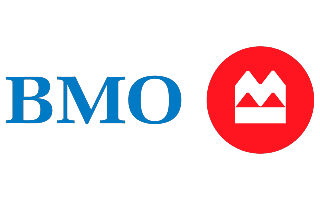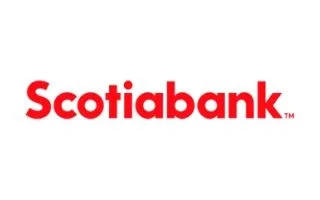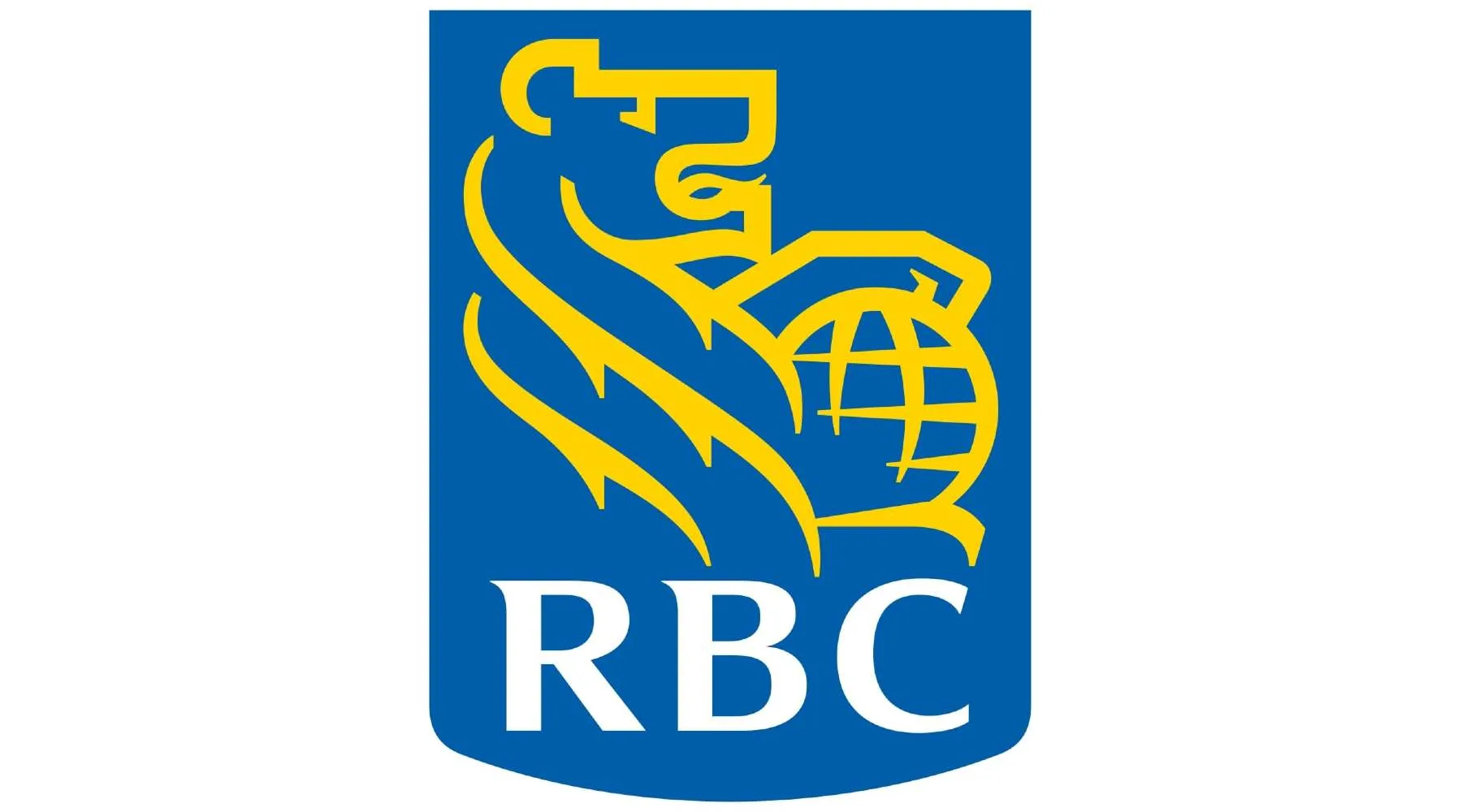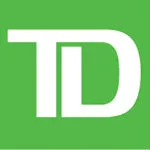 BMO Performance Chequing Account
BMO Performance Chequing Account
Banking with the biggest banks in Canada comes with a lot of perks and some drawbacks, including access to a comprehensive range of financial products. When comparing the Big 5 Banks, Canadians can look at their financial offerings, market cap and presence across the country to decide which is the right fit for you.
Whether it’s Big 5 or Big 6, most Canadians continue to bank with one of the largest Canadian banks. In a recent survey from Finder, where more than 1,850 Canadians were asked about their plans for banking in 2023, more than half of Canadians (55%) planned to open an account at a Big 5 Bank in 2023. To learn the pros and cons of banking at a Big 5 Bank (or Big 6 Bank), check out this comparison of the biggest and maybe best banks in Canada.
What are the Big 5 Banks (and Big 6 Banks) in Canada?
The five biggest banks in Canada, dubbed the Big 5 Banks are RBC, TD Bank, BMO, Scotiabank and CIBC. However, over the years, the size and growth of National Bank prompted many to adjust the term from Big 5 Banks to Big 6 Banks.
To make it onto the list of the Big 5 — or Big 6 — these financial institutions are assessed based on their market capitalization. As result, the biggest six banks in Canada are:
- RBC (Royal Bank of Canada)
- TD Bank (Toronto-Dominion Bank)
- BMO (Bank of Montreal)
- Scotiabank (Bank of Nova Scotia)
- CIBC (Canadian Imperial Bank of Commerce)
- National Bank (National Bank of Canada)
These Big 5 Banks (or Big 6, if you include National Bank), serve millions of customers each year. The biggest banks in Canada offer a wide range of personal and business financial products and together own the largest ATM networks in the country.
RBC
First incorporated in 1869, RBC Royal Bank now has 17 million clients worldwide. It is the biggest bank in Canada by market share and largest by assets. RBC has over 97,000 employees who serve customers in Canada, the US and in 27 other countries around the world. It has over 4,000 ATM and branch locations. RBC ranked second among the Big 5 Banks in the J.D. Power 2023 Canada Retail Banking Satisfaction Study. In 2020, RBC was named the North American Retail Bank of the Year for the third year in a row by Retailer Banker International.
Want to learn more? Compare RBC chequing accounts, RBC Savings accounts and RBC credit cards.
TD Bank
TD Canada Trust (commonly referred to as TD or TD Bank), is the second of the biggest banks in Canada by market share and assets. Since its founding in 1855 in Toronto, Ontario, TD Bank has grown to serve over 27.5 million customers around the world. It has over 2,500 ATM and branch locations. TD has been listed on the Dow Jones Sustainability World Index for 12 consecutive years as of 2023.
Want to learn more? Compare TD chequing accounts, TD savings accounts and TD credit cards.
BMO
As Canada’s third largest bank by market capitalization, BMO serves 13 million customers globally, including eight million in Canada alone. It has over 55,000 employees, and over 3,300 ATMs nationwide. BMO ranked highest among the Big 5 Banks in the J.D. Power 2023 Canada Retail Banking Satisfaction Study. Because it was founded in 1817, BMO has the distinction of being Canada’s oldest of the Big 5 Banks.
Want to learn more? Compare BMO chequing accounts, BMO savings accounts and BMO credit cards.
 BMO Performance Chequing Account
BMO Performance Chequing Account
Scotiabank
Scotiabank is the third biggest bank in Canada by assets and fourth biggest by market share. Scotiabank has over 88,000 employees, and serves more than 10 million small business, commercial banking and wealth management customers across Canada. It has over 900 branches and nearly 3,600 ATMs in Canada, along with over 44,000 partner ATMs worldwide. Since beginning in 1832, Scotiabank has primarily focused on serving countries in North America and parts of South America, but also has a presence in Europe and Asia Pacific.
Want to learn more? Compare Scotiabank chequing accounts, Scotiabank savings accounts and Scotiabank credit cards.
 Scotiabank Ultimate Package
Scotiabank Ultimate Package
Scotiabank Ultimate Package
Earn a welcome bonus of up to $400. Valid until July 31, 2024. Plus, earn up to 6.05% interest for 3 months on your MomentumPLUS Savings Account.CIBC
Even though CIBC is the smallest of the Big 5 Banks, it still has 48,000 employees who serve more than 14 million customers across Canada and globally. CIBC has over 1,000 bank branches and over 2,900 ATMs throughout Canada. With its founding in 1867, it’s Canada’s second oldest of the Big 5 Banks. CIBC ranked third among the Big 5 Banks in the J.D. Power 2023 Canada Retail Banking Satisfaction Study.
Want to learn more? Compare CIBC chequing accounts , CIBC savings accounts and CIBC credit cards.
National Bank
Following its founding in 1859, National Bank has grown to offer 660 branches in Canada, along with establishing a presence in 20 US cities and 120 foreign countries. It has over 17,000 employees and 2,800 ATMs across Canada. National Bank won four awards in the Ipsos 2023 Financial Service Excellence Awards in categories like Financial Planning & Advice, ATM Banking Excellence and Online Banking Excellence.
Want to learn more? Compare National Bank chequing accounts, savings accounts, personal loans, credit cards and investing options.
Compare products offered by the Big 5 Banks in Canada
BMO |  RBC |  TD Bank |  Scotiabank | CIBC | |
|---|---|---|---|---|---|
| Accounts | |||||
| Popular accounts | BMO Performance Chequing Account | RBC Signature No Limit Banking Account | TD Unlimited Chequing Account | Scotiabank Preferred Package | CIBC Smart Account |
| Lending |
| ||||
| Popular credit cards | BMO Preferred Rate Mastercard | RBC Avion Visa Infinite | TD Cash Back Visa Infinite Card | Scotia Momentum Visa Infinite Card | CIBC Dividend Visa Infinite Card |
| Investing |
Ranking of Big 5 Banks in Canada, by market cap
As of March 2024, RBC has the largest market capitalization in Canada (compared to the remaining banks on the Big 5 list), followed by TD Bank.
| Bank | Market capitalization (As of March 1, 2023) |
|---|---|
| RBC | $135.6 billion (CAD) |
| TD Bank | $107.1 billion (CAD) |
| BMO | $66.5 billion (CAD) |
| Scotiabank | $56.2 billion (CAD) |
| CIBC | $41.8 billion (CAD) |
Regardless of which bank you choose, all the Big 5 Banks — and, indeed, all regulated banking and fintech companies operating in Canada — are backed by CDIC deposit insurance, which protects eligible deposits up to $100,000.
Where Canadians plan to open a new bank account in 2023
In a recent Finder survey, where more than 1,850 Canadians were asked about their banking plans in 2023, more than half (55%) said that they planned to open a new bank account at one of Canada’s Big 5 Banks.
Which is bank is best in Canada for personal banking?
There’s no one bank that is best bank in Canada overall, as what’s best for you will depend on your financial situation and goals. However, here are a few differences between the Big 5 Banks that may help sway you one way or another.
- RBC. Biggest bank in Canada in terms of market share and most ATMs
- TD Bank. Recognized as a global sustainability leader
- Scotiabank. Has a large global ATM network of over 44,000 partner ATMs
- BMO. BMO is Canada’s oldest bank (institution number is 001)
- CIBC. Ranked third for customer satisfaction
Choosing between the Big 5 banks
Deciding on the best bank in Canada for personal banking depends on your unique financial needs. The Big 5 banks all offer a similar range of products and services, but there are a few key differences.
First, consider the accounts and services you wish to use. For example, you might be interested in a high-yield savings account and a low-fee chequing account.
Once you have this in mind, compare what each bank has to offer in terms of interest rates, fees, customer support and more.
How to compare bank accounts from the Big 5 Banks
When you’re looking at chequing accounts offered by the Big 5, consider the following features:
Fees at the Big 5 Banks
From monthly fees to overdraft charges and everything in between, be sure to compare fee schedules between accounts. Some banks will waive your monthly fee if certain conditions are met, whereas others may charge you regardless. Be sure to consider how you will be using your account when considering the importance of fees. For instance, if you plan to frequently withdraw cash from ATMs, look into the fees associated with ATM transactions.
ATM access for the Big 5 Banks
Convenient access to the money in your chequing account is another key factor in choosing the right product for your needs. Check out whether the account provides free access to ATMs, how many ATMs are in the bank’s network and where those ATMs are located. Also consider whether the bank will reimburse you for out-of-network ATM charges.
Online banking for the Big 5 Banks
The Big 5 Banks all have Internet and mobile banking access, so it comes down to which offers the best customer experience. CIBC’s mobile banking app has a great reputation, but you may want to compare mobile banking apps to find out which would be best for your needs. Make sure that the bank and app you choose is compatible with your mobile device if you like banking on the go.
Interest rates at the Big 5 Banks
Although extremely rare, an interest-bearing chequing account can put your money to work when it’s not being used. Interest rates on chequing accounts at Big 5 Banks may not be much, but it can still grow your account balance. Interest rates may also be higher on balances that are above a certain threshold.
Minimum deposit and balance requirements at the Big 5 Banks
Minimum deposits and balance requirements may vary depending on which bank you choose. Plus, if you don’t meet the balance requirements, you might be charged a fee, which could eat into your balance. Shop around to find an account with a minimum deposit in your budget and balance requirements you can easily meet each month to avoid unnecessary charges.
Perks at the Big 5 Banks
Some banks offer incentives and perks to attract customers, including signup bonuses, free linked accounts, rewards programs and fee-free ATMs. Compare the features and signup bonuses of each account in order to make the most of your money.
Branch locations at the Big 5 Banks
If you prefer to do banking in person, you might want to think about how many branches are in your area. There’s no point in opening an account with a bank if most of its branches are on the other side of town.
When you’re looking at savings accounts offered by the Big 5, consider the following features:
Interest rates
Interest rates determine how quickly your savings can grow. Look at the interest rates of each account to determine which one has the best value. With the Big 5, you may be able to get an introductory rate, which offers higher interest for a set period of time. Interest rates may also be higher on account balances that are above a certain threshold.
Online banking
The Big 5 Banks all have Internet and mobile banking access, so it comes down to which offers the best customer experience. CIBC’s mobile banking app has a great reputation, but you may want to compare mobile banking apps to find out which would be best for your needs. Make sure that the bank and app you choose is compatible with your mobile device if you like banking on the go.
Fees
From monthly fees to overdraft charges and everything in between, be sure to compare fee schedules between accounts. Some banks will waive your monthly fee if certain conditions are met, whereas others may charge you regardless. Since you’re most likely opening a savings account to save money, it’s important to consider how fees might affect your savings goals.
Minimum deposit and balance requirements
Minimum deposits and balance requirements may vary depending on which bank you choose. Plus, if you don’t meet the balance requirements, you might be charged a fee, which could eat into your savings. Shop around to find an account with a minimum deposit in your budget and balance requirements you can easily meet each month to avoid unnecessary charges.
Perks
Some banks offer incentives and perks to attract customers, including signup bonuses, free linked accounts, rewards programs and fee-free ATMs. Compare the features and signup bonuses of each account in order to make the most of your savings.
Branch locations
If you prefer to do your banking in person, you might want to think about how many branches are in your area. There’s no point in opening an account with a bank if most of its branches are on the other side of town — unless you prefer an online savings account.
Pros and cons of banking with the top 5 banks (or Big 6 Banks) in Canada
Pros
- More access to your money. By choosing one of the Big 5, you’ll have easy access to your money through a large number of branches, ATM networks and online banking.
- 24/7 customer service. Depending on the Big 5 Bank you choose, you’ll likely have access to 24/7 customer service, which can come in handy if you have a financial emergency.
- Easily link your Big 5 bank account. If your chequing account is already with one of the Big 5, you’ll find it easy to link your new savings accounts.
- Financial stability. The Big 5 have the largest market share of all banks, meaning you can trust that your money is safe. And even if any of these banks were to fail, they’re insured by the CDIC, meaning you’re protected for up to $100,000 per eligible deposit.
Cons
- Other brands out there. As some of the best banks in Canada, the Big 5 are all well-known institutions, but you should still look at other banks when making your comparisons. This helps to ensure that your savings are working as hard as possible toward your financial goals.
- Lower interest rates. The Big 5 have a reputation for having the lowest interest rates in the market for their savings accounts. You can compare high-interest savings accounts here.
- Not the most competitive. Due to their popularity, the Big 5 Banks aren’t always as competitive with their rates and fees as smaller banks and credit unions.
What are Canada’s Big 6 Banks?
In the last decade, another bank operating in Canada has made it to the ‘big bank’ list — National Bank. When combined with RBC (Royal Bank of Canada), BMO (Bank of Montreal), TD Bank (Toronto-Dominion Bank), Scotiabank (Bank of Nova Scotia), and CIBC (Canadian Imperial Bank of Commerce) these banks are known as the Big 6 Banks in Canada.
Alternatives to the Big 5 Banks
Although the Big 5 Banks (or even the Big 6 Canadian banks) have the biggest financial footholds in Canada, they are not the only banking options. In fact, depending on your financial needs, other banks may be a better fit for you.
A popular alternative to the Big 5 Banks are credit unions and online banks like Tangerine or EQ Bank. Online banks and credit unions often offer fee-free account options and some of the most competitive interest rates on the market.
The downside to Big 5 Bank alternatives is that they may not offer a full suite of financial products. For example, you may not be able to get a mortgage from an online bank. However, you could save a lot of money on your everyday banking by switching to a no-fee chequing account or high interest savings account at an online bank for example.
Compare more alternatives to the Big 5 Banks (or Big 6 Banks)
Interested in opening your first online bank account? Compare the products below from some of the best online banks in Canada.
Bottom line
If financial stability is your number one priority when choosing a bank, then opening an account with one of the Big 5 Banks could be right for you. These powerhouses aren’t likely to fail any time soon and offer a wide range of financial products to meet your personal and business banking needs. However, these institutions aren’t known to have the most competitive interest rates or fees.
Compare the Big 5 Banks or Big 6 Banks with smaller providers and credit unions to find the savings account that best fits your needs.
Survey methodology – Finder Consumer Sentiment Survey Q1 2023
The results of the Finder: Consumer Sentiment Survey Q1 were collected through an online Pollfish survey conducted between December 2022 and January 2023. In the survey, 1,846 Canadians from across the country were asked about their current banking services and their intentions and motivations for new banking products. The estimated margin of error for the survey is +/- 3%, with a 99% confidence level.
Survey Methodology – Finder: Consumer Sentiment Tracker Q2 2023
The results of the Finder: Consumer Sentiment Tracker Q2 were collected through an online Pollfish survey conducted between April 27 to 29, 2023. In the survey, 1,011 Canadians from across the country were asked about their current banking services and their intentions and motivations for new banking products. The estimated margin of error for the survey is +/- 3.08%, 19 out of 20 times.
FAQs about the Big 5 and Big 6 Banks
More guides on Finder
-
Mydoh promo codes
Explore Mydoh promo codes and compare your options with other Canadian bank offers.
-
Neo Financial Canada
We break down the rates, fees and features of the Neo Financial Money Account and Neo High Interest Savings Account.
-
Benefits, costs and limits of overdraft protection in Canada
Overdraft protection means you don’t pay high NSF fees if you overspend. But overdraft limits and fees still apply.
-
Best new bank account offers for June 2024
Earn cash, rewards points, bonus interest rates and more with these new bank account offers and promotions.
-
Best bank for newcomers in Canada
Searching for the best bank in Canada for new immigrants? Find the best bank for newcomers to Canada in our new immigrants’ banking guide.
-
Bank of Canada interest rate forecast report
Read Finder’s BoC Interest Rate Report for forecasts from some of Canada’s brightest minds in economics and learn more about how recent rate increases could affect Canada’s real estate market.
-
Best bank in Canada for students
Looking for the best bank in Canada for students? Find out what accounts offer low or no fees, what accounts are best for travel and which student accounts come with debit cards or extra perks.
-
Open a bank account online in Canada in 5 easy steps
Compare and open a bank account online in Canada in as little as 5 minutes. Learn what you need to apply and how to get started today.
-
How a joint account works in Canada for 2024
Opening a joint bank account is a big step for any couple. Find out more about what to look for in an account and how to avoid the common pitfalls.